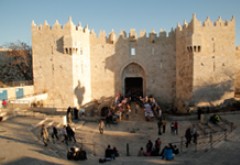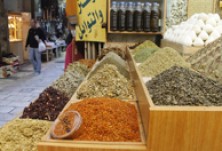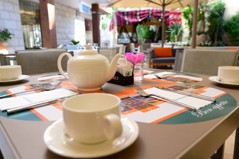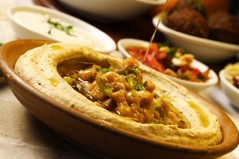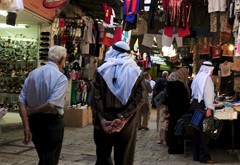During the Byzantine period, a phenomenon spread among the religious community, namely, a group of monastic monks leaving cities to lead secluded lives in remote areas of the Jerusalem desert. The movement started in Egyptian rural areas and spread and deepened into Palestine, where archaeological excavations revealed about 80 locations in the Jerusalem desert, an area 80 by 20 kilometers in size. This phenomenon attracted academic and archaeological studies and became dissertation themes for MSc and PhD degrees. The locations where monasticism and seclusion prospered included Deir Mar Saba Monastery, near the village of Al-Ubaydiyeh in Bethlehem, Deir Wadi El-Qilt (St. George - Coziba) along the Jerusalem-Jericho road, Deir Hijleh near the Baptism site along the River Jordan, and Deir Qruntul in Jericho.
Desert Monasticism Pioneers
Three people left their footprints in the monastic movement in the Jerusalem desert. The first is Monk Chariton, who established the first Laura (group of monastic cells or caves) around 330 AD, the second is Euthymius (376 - 473 AD), who attracted thousands of conscripts in this practice, and the third is Saba (439 - 532 AD), the great organizer of this phenomenon.
Monastic Styles
Two styles dominated monasticism. The first is known as Coenobium, whereby a group of monks live in a monastery in a cooperative manner, with each performing a specific activity in addition to his main mission of worship, meditation, prayer, and reading. There was normally group and individual prayer, but food and social activities were common and cooperative. This practice required a location with a wall surrounding various facilities, mainly a church, a meeting and food hall, a close source of water, a small vegetable garden, and small units for seclusion.
The second style is known as Laura, comprising a secluded life for a group of monks within a specific periphery, with each monk living alone in a cave or a secluded enclave, eating and praying alone for five days of the week, meeting with his colleagues on Saturday and Sunday for group prayers and worship, then taking supplies and returning to his seclusion.
Regardless of the group or individual lifestyles of these monks, their lives were characterized by absolute simplicity and frugality in their behavior and food. Their basic nutrition came from bread and what they could scrounge from their harsh environment, in terms of fruits and plants, some of which they dried. They sometimes had simple economic activities, such as reclaiming cultivable land, but wheat was normally imported from Jordan for the large monasteries. They also performed activities such as weaving baskets and ropes to barter with city dwellers or population concentrations in their vicinity. This monastic life in seclusion, away from the buzz of large cities, afforded some monks the time to polish their talents in poetry, literature, and theology, enriching the cultural life of the Christian faith.
Wadi El-Qilt Monastery
Entry and Reception
Visitors who can make the steep trip up to the monastery on foot are welcome. The hike is gratifying, with the trail snaking by the water canal among some trees and vegetation. The monastery is open for visitors, both male and female, in the morning and afternoon. Visitors are met with a cold water drink and coffee, after the tiring hike by the Roman canal.
The monastery comprises a cave associated with the Prophet Elijah, which can be accessed by a staircase from the internal hall. Some myths have it that the prophet lived in this cave for three years. The monastery also includes a church, named after the Virgin Mary, a number of skulls belonging to monks who died during the Persian invasion, and a tomb said to be of St. George, after whom the monastery was named.

